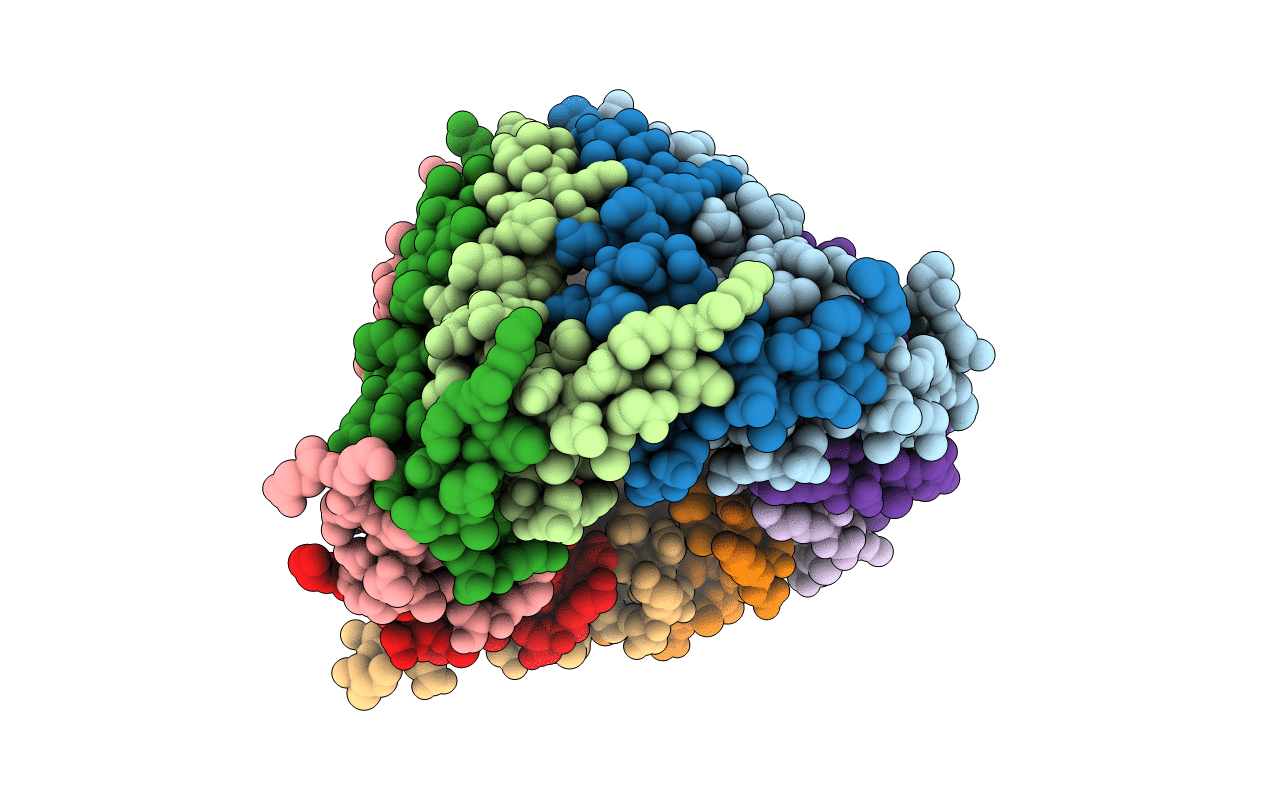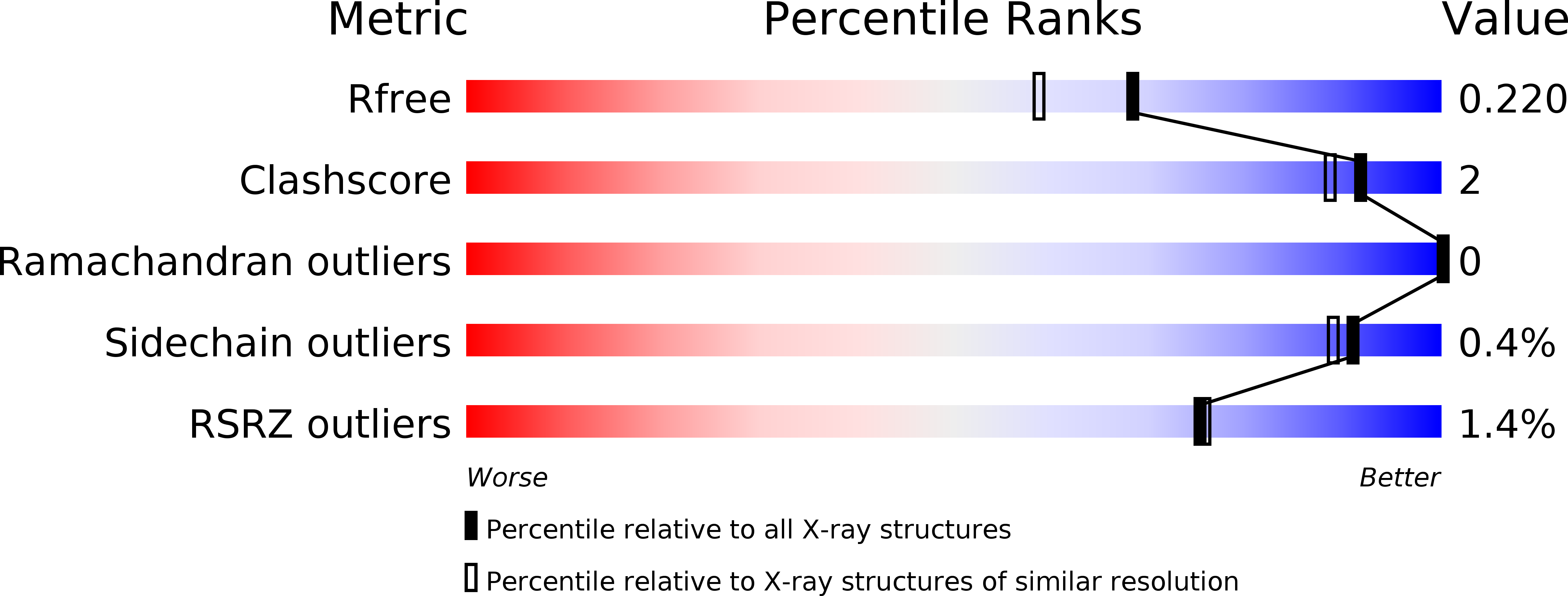
Deposition Date
2011-06-10
Release Date
2011-12-28
Last Version Date
2024-10-23
Entry Detail
PDB ID:
3ZQM
Keywords:
Title:
Crystal structure of the small terminase oligomerization core domain from a SPP1-like bacteriophage (crystal form 1)
Biological Source:
Source Organism:
BACILLUS PHAGE SF6 (Taxon ID: 10773)
Host Organism:
Method Details:
Experimental Method:
Resolution:
1.85 Å
R-Value Free:
0.21
R-Value Work:
0.17
R-Value Observed:
0.17
Space Group:
P 1 21 1


